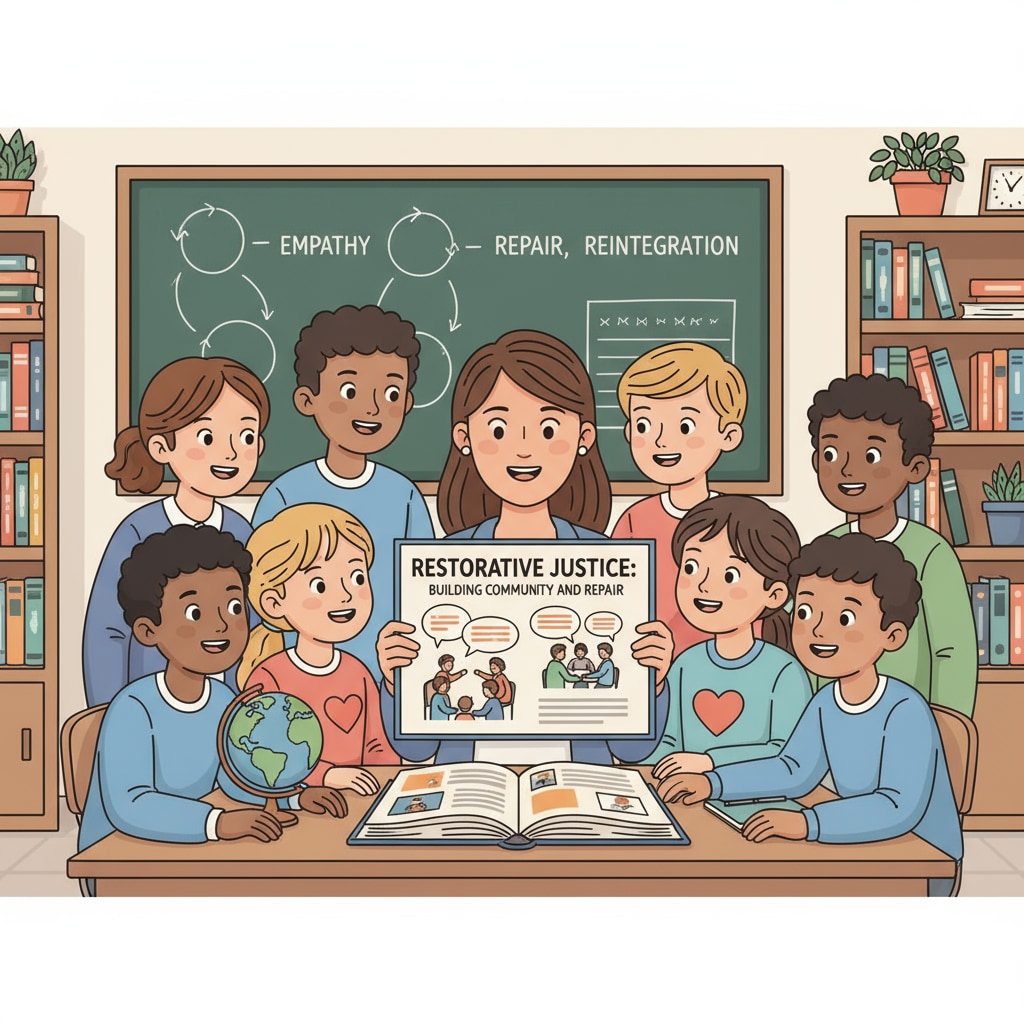Restorative justice, education resources, and school implementation are crucial elements in shaping a positive educational environment. In K12 education, especially within large urban Title 1 schools, the need for a more constructive approach to discipline is evident. Restorative justice offers a pathway to transform punitive systems into ones that focus on community repair and growth.

The Core Concepts of Restorative Justice in Education
At its heart, restorative justice in education emphasizes repairing harm, building relationships, and promoting accountability. Instead of punishing students for misbehavior, it aims to understand the root causes and involve all parties affected—the victim, the offender, and the community. For example, when a student bullies another, restorative justice would bring them together, along with teachers or mediators, to discuss the impact of the action. This process encourages empathy and communication, crucial for a healthy school community. As per Restorative justice on Wikipedia, it’s about restoring balance and harmony.
Essential Education Resources for Restorative Justice
Implementing restorative justice requires specific education resources. Training for teachers and staff is vital. They need to learn how to facilitate restorative conversations, manage conflicts, and create a safe space for dialogue. Additionally, educational materials such as books, articles, and online courses can provide in-depth knowledge. For instance, there are many resources available on platforms like Restorative justice on Britannica that can be used for professional development. Another important resource is time. Schools must allocate sufficient time for restorative processes to unfold effectively.

Furthermore, a supportive school culture is an intangible yet essential resource. This involves creating an environment where respect, empathy, and open communication are valued. When students and staff feel safe and respected, they are more likely to engage in restorative practices.
In conclusion, restorative justice in education holds great potential for transforming the educational landscape, especially in Title 1 schools. By understanding its core concepts, securing the necessary resources, and implementing effective strategies, educators can create a more harmonious and inclusive school community. The journey from punitive discipline to restorative justice is one that can lead to positive long-term impacts on students’ social and emotional development.
Readability guidance: This article uses short paragraphs and lists to summarize key points. Each H2 section provides useful information in a clear manner. The proportion of passive voice and long sentences is controlled, and transition words are used throughout to enhance readability.


